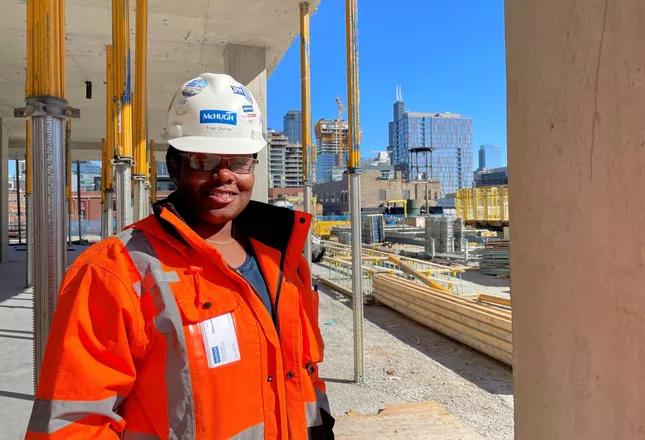More Women Are Working In Construction Than Ever Before, But It’s Still Mostly A Man’s World
by Maddy McCarty, BISNOW – When Kris Young first set foot on a large construction site, someone handed her a pink hard hat. Young was confused. After all, she was already wearing one with her company logo on it.
“He said, ‘Oh no, you wear that around so when the guys on the job site see the pink hard hat, they know a lady’s present and they clean up their acts a little bit,’” Young said.
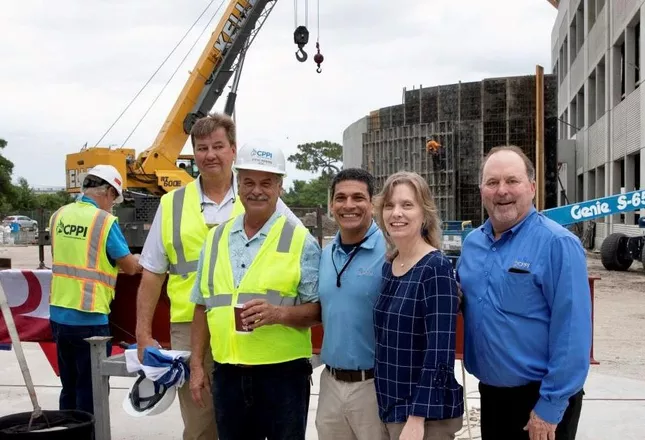
Kris Young, a senior project manager with Baker Barrios Architects, has been in the industry for more than 30 years.
That was 30 years ago. Young, now a senior project manager with Baker Barrios Architects in Tampa, Florida, said it would be hard to imagine that happening today, with the industry aggressively — and increasingly successfully — repositioning itself as an equal opportunity career path.
From 1991 to 2022, the percentage of women in the construction industry has risen from 1.9% to 10.9%, according to the Bureau of Labor Statistics. During certain months of last year, including July and August, women made up 14% or more of the construction industry — a record from a previous high in October 2009, when they made up 13.5% of workers, Construction Dive reported.
The number of women in the construction trade has never been higher thanks to a concerted effort over two decades by labor groups and employers to remove or reduce hurdles amid a worsening worker crisis.
But while progress has undeniably been made, only 1 in 10 construction industry employees are women, significantly lagging other industries. In 2022, by contrast, women accounted for 48.1% of the real estate industry’s workforce and 46.8% of the total workforce, BLS data shows.
Women in construction told Bisnow part of the solution comes down to raising awareness careers in the industry are even an option.
Young, for one, believes education could help close that gap, as it did for her. Title IX, a federal civil rights law that prohibits discrimination in educational programs and activities on the basis of sex, passed when she was in junior high at a time girls at her school generally took home economics while boys took shop class.
Young figured that she already learned the former at home. In addition, her father’s friend happened to teach the shop class and advocated for her to take it, with the newly passed law on his side.
“It was a little bit of guidance, like right at the critical time in education,” Young said.
Terez Sturrup, a project manager at McHugh Construction in Chicago, has a similar story. She’s been in the construction industry for about 11 years, but it all started with an after-school vocational program.
“They teach you tactical drawing, a little bit of rudimentary estimating, that kind of stuff,” Sturrup said.
That program placed participants in a summer job program every year, and her placement happened to be in welding.
“It exposed me to options,” Sturrup said. “Other than that, I would probably have picked from the standard list of teacher, doctor, whatever.”
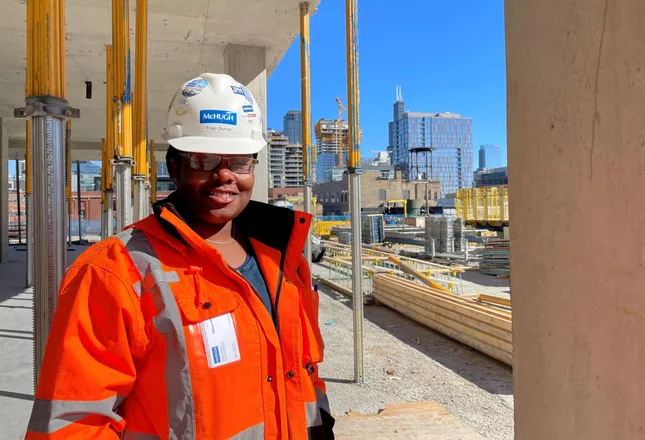
For Sturrup, working in a male-dominated industry has come with challenges.
“I knew starting out that I would need to be mindful,” she said. “That I sort of had to prove myself.”
Cortney Boswell, a project manager with GI Stone contractors in Chicago, said she feels she has to work harder than her male counterparts to be heard.
“My voice has to be louder in a room, and I have no room for error,” Boswell said.
The Institute for Women’s Policy Research found that 47.7% of tradeswomen feel they are “held to a different standard than their male co-workers, face discrimination in many aspects of their work, and sometimes contend with an unsupportive if not hostile work environment.”
When Boswell gets the opportunity to participate in career fairs and talk about her industry to girls and young women, she tries to keep it positive because the impact of stereotypes starts young, she said.
“The girls get the Barbies. The boys get the construction stuff,” Boswell said. “To see a woman in the trade, it opens eyes.”
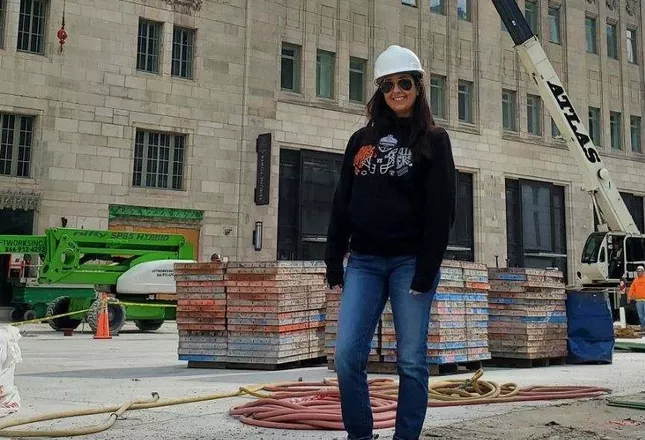
Skanska is one company that has made a concerted effort to change stereotypes. The company has documented its efforts to increase female representation in its workforce to 18.8% as of 2021, up from 12.9% in 2014.
Veronica Gross, who works for Skanska USA as a project executive for projects including Georgia World Congress Center and Hilton Signia Atlanta, said she was fortunate to have a career path that was paved with female role models. A friend introduced her to the construction industry when she was unsatisfied with her job options right out of college, and the first project manager she worked with was a woman as well.
“Having a female project manager right off the bat on my very first project … that was huge, because I just thought, ‘Well, that’s just how it is,’” she said. “But then you leave that project, you go to the next one, and you realize there really aren’t a lot of women.”
When she got her master’s degree in building construction at Southern Polytechnic University, Gross would often be the only female in her classes.
That’s changing now, she said, noting the many women in the classes that come to tour her project site from Georgia Tech and Georgia State University.
“It’s really, really great to see,” Gross said. “It’s definitely not 50-50. But there’s a huge, huge rise.”
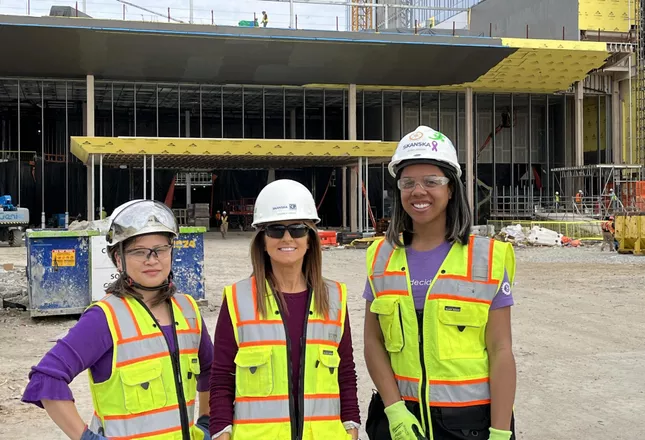
Over the last year, gains in female representation in the construction industry have been driven by heavy recruiting amid record worker shortages. The construction industry reported 248,000 job openings in January, according to an Associated Builders and Contractors analysis of BLS data, a figure ABC Chief Economist Anirban Basu called “simply shocking” since it means there are now nearly two job openings for every unemployed American.
“In a nation that is set to rebuild much of its infrastructure and is operating in the megaproject era, including the construction of manufacturing facilities for computer chips, inputs to growing alternative energy industries and electric vehicles, today’s numbers seemingly defy credulity,” Basu said in a statement.
A disproportionately large share of the women joining the construction workforce are Hispanic, a group that is significantly overrepresented in the industry. Per BLS, Hispanics made up 17.6% of the total workforce, but 30% of the construction industry as of 2020.
But getting more women to consider the construction trade is only the start. The Institute for Women’s Policy Research reported that 44% of tradeswomen are considering leaving the industry, with lack of respect or discrimination as the top reasons cited.
There is an old-school mentality still present in the industry, Boswell said. That’s changing, but may be part of what’s holding women back from being equally represented or establishing long-term careers.
Boswell said change will happen when mindsets evolve.
“It’s just some old-school mentalities that need to change. I feel like as a kid, a little girl, you’re never told [about it], like construction is always a boy’s toy,” she said. “I don’t think it’s the women themselves.”
Education and exposure to different career options in engineering, project representation and marketing can help young girls envision themselves in the construction industry, Gross said.
“I think it goes back to the fear of the unknown, not really understanding what those opportunities might be,” she said. “Having somebody, a mentor, even if they’re not in the industry, but just somebody that can help with opening up people’s eyes to what opportunities are out there.”
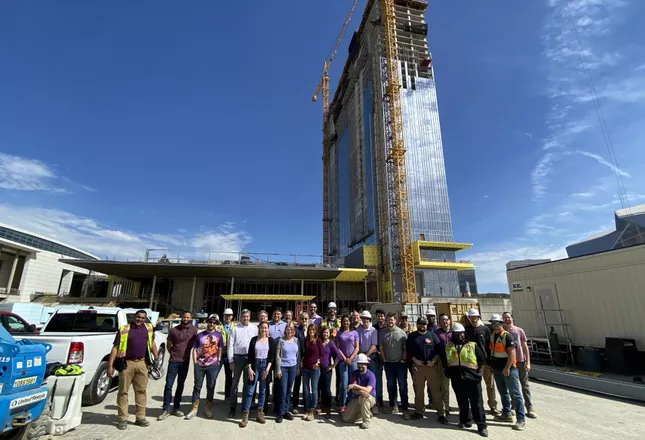
Women have a lot to offer the industry, Gross said.
“Being inclusive and having a diverse culture is so important,” she said. “[Having] women on teams really brings the team together, in a way. I know that may sound strange, but it just allows people to get that diverse thought in there. It’s an opportunity to have different points of view.”
The differences between men and women can be beneficial to projects, Young said.
“Obviously there’s different personalities in both men and women, but I think it’s just a different way of listening, teaming and problem-solving,” she said.
The industry has a lot to offer women, as well. The gender pay gap is significantly smaller in construction occupations, with women earning an average of 95.5% of what men make, compared to the national average of 82.9%, the National Association of Women in Construction reported.
Just as importantly, careers in construction can be fulfilling. Sturrup was in her fourth year of architecture school when she took a field trip to a project site.
“Looking around the job site and seeing all the activity, I realized that I was more interested in this aspect of the industry than design work,” she said. “At the point that you’re on a construction site, it’s there. It’s happening. So the activity and hands-on aspect of it definitely drew me in a lot more.”
The big payoff comes when a project is over, Boswell said.
“I love when I look at the skyline … I really just love looking at those buildings and knowing I took part in something that is going to be here after I’m gone. I did,” Boswell said. “It makes me prideful.”
Contact Maddy McCarty at maddy.mccarty@bisnow.com


